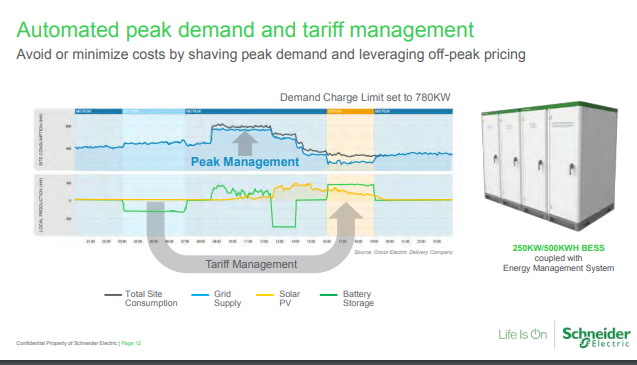
By Theresa Walsh Giarrusso
Could a microgrid help your facility save money? Could it help improve your facility’s resiliency during storms and disasters? Could it make your facility more sustainable?
Andy Haun, Schneider Electric’s microgrid chief technology officer, explained how microgrids work and how they could benefit your healthcare facility at the 6th Annual New York Hospital, Outpatient Facilities & Medical Office Building Summit. Here are some of the big points from the presentation:
- Terms to know: MacroGrid – Large interconnected regional energy system supporting our modern energy economy. MicroGrid – Interactive with the Macrogrid, a localized energy system supporting buildings, campuses or subdivisions. Mini Grid – Small “off-grid” system usually found on islands or remote locations without Macrogrid interconnection.
- Macrogrids and microgrids can interact to benefit both the end user and the grid operator. Energy consumers can become Prosumers — consuming some and producing some of their own.
- Microgrids are suitable for commercial buildings, factories, healthcare facilities, data centers, municipal services, military installations and transportation facilities.
- Hospitals have very high electrical intensity, 2.5 times that of similarly sized commercial buildings. 24/7 emergency and inpatient care. Electrical dependence for imaging and instrumentation.

- Why use microgrids for healthcare facilities: Volumetric energy cost is reduced by using less expensive generation. Peak demand charge shaving and demand response for cost savings. Increased reliability and energy security improves patient experience. Social responsibility — sustainable energy that is healthier for society.
- Advances in Microgrid control and DER integration are enabled by IT/OT convergence: Predictive DER management. Interfaces with energy markets. Integrate with weather forecasts. Forecast when to produce and when to store. Cloud-based access anywhere.
- Healthcare facilities can decide when to use power from the main grid, when to produce power and use its own energy to avoid peak demand and peak pricing. They can also choose to produce and store it for later use.
- Microgrids also provide threatening weather resiliency. Weather prediction and power quality monitoring can proactively trigger resiliency optimization measures include: Charge the battery to full capacity. Warm and pre-lube emergency generation. Adjust protective relay settings. Proactively island the site. Shed non-essential load. Electrically isolate sensitive equipment.
